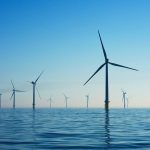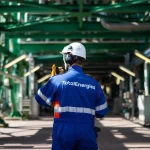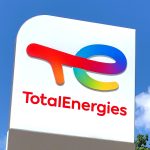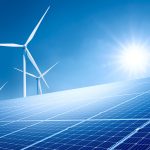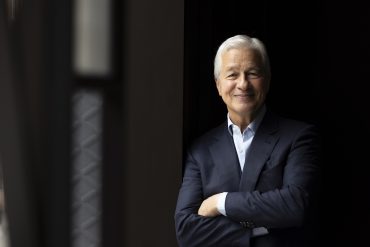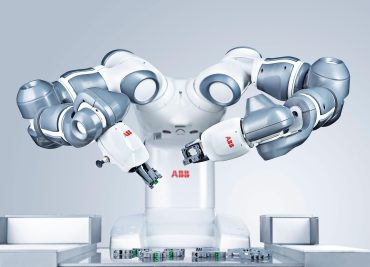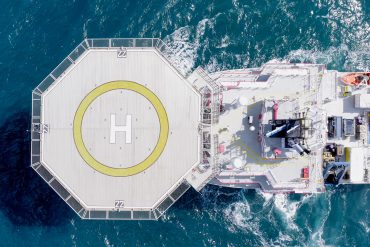
- Energy Infrastructure
- Investing
- M&A
Saipem and Subsea7 Merge to Create €21B Offshore Giant
5 minute read

Energy services merger creates €21 billion offshore powerhouse targeting renewable and traditional energy projects worldwide
Key Takeaways
- €21 billion merger creates energy services giant: Saipem SpA and Subsea7 SA finalize binding agreement to form Saipem7, combining €21 billion in annual revenue with €43 billion contract backlog, targeting completion by second half 2026.
- €300 million in annual synergies projected: Fleet optimization and procurement efficiencies expected to deliver substantial cost savings by year three, with shareholders receiving €450 million in extraordinary dividends before closing.
- Strategic positioning for energy transition: Combined entity operates 60+ construction vessels across oil, gas, offshore wind, and carbon capture projects in over 60 countries, creating dual-track approach for traditional and renewable energy markets.
Introduction
The global energy services sector witnesses its most significant consolidation in years as Saipem SpA finalizes a binding merger agreement with Subsea7 SA. The Italian state-backed engineering company and Luxembourg-registered offshore specialist announce the creation of Saipem7, a combined entity targeting €21 billion in annual revenue.
This strategic combination positions the merged company as a dominant force across traditional hydrocarbon projects and emerging energy transition markets. The deal represents a transformative shift in how energy infrastructure companies approach the evolving landscape of offshore construction and renewable energy development.
Key Developments
The merger agreement builds on initial discussions from February, with Subsea7 shareholders receiving 6.688 Saipem shares for each unit held. The transaction structure ensures equal ownership distribution, with 50% control allocated to each company’s existing shareholder base.
Major stakeholders demonstrate strong support for the combination. Eni SpA and CDP Equity SpA, Saipem’s largest shareholders, secure approximately 10.6% and 6.4% stakes respectively in the new entity. Siem Industries SA, Subsea7’s top shareholder, obtains around 11.8% ownership and commits to appointing the chairman role.
Leadership structure reflects the balanced partnership approach. Alessandro Puliti, Saipem’s current CEO since August 2022, takes the helm of Saipem7, while Kristian Siem assumes the chairman position. The Offshore Engineering and Construction segment operates as an independent unit under the Subsea7 brand, with John Evans continuing as CEO.
Market Impact
The combined entity enters the market with substantial scale advantages, operating a diversified fleet of over 60 construction vessels capable of shallow-water to ultra-deepwater operations. This comprehensive capability spans traditional oil and gas projects alongside offshore wind installations and carbon capture infrastructure.
Financial metrics demonstrate the merger’s immediate market positioning. The companies recorded combined 2024 revenues of €21 billion, EBITDA exceeding €2 billion, and free cash flow over €800 million. Their joint backlog reached €43 billion by Q1 2025, providing substantial revenue visibility.
According to Rigzone, the merger addresses sector consolidation needs following challenging years in offshore wind and oil and gas downturns. The combination creates operational efficiencies that individual companies struggle to achieve independently in the current market environment.
Strategic Insights
Saipem7’s structure around four business lines enables strategic flexibility across energy transition timelines. The Offshore Engineering and Construction, Onshore Engineering and Construction, Sustainable Infrastructures, and Offshore Drilling segments position the company for both resilient hydrocarbon demand and expanding renewable markets.
Operational synergies target €300 million in annual savings by year three through fleet optimization and procurement improvements. These efficiencies include extended charter periods for leased vessels, enhanced supplier negotiations, and streamlined project execution processes across the combined organization.
The merger addresses client demands for integrated solutions across complex energy projects. Combined technical capabilities encompass heavy lift operations, multiple pipeline installation methods, and offshore wind turbine installations, creating comprehensive project delivery capabilities that few competitors match.
Expert Opinions and Data
Industry analysts view the combination as addressing fundamental sector challenges through scale and diversification. The combined workforce of approximately 44,000 employees, including over 9,000 engineers and project managers, provides technical depth across traditional and emerging energy markets.
Financial structure supports sustainable operations with projected 0.6x net debt-to-EBITDA leverage supporting investment-grade credit access. The commitment to distribute at least 40% of free cash flow annually after lease obligations demonstrates confidence in cash generation capabilities.
Market positioning reflects broader industry trends toward consolidation and energy transition alignment. The ability to execute projects across oil, gas, carbon capture, and offshore wind markets positions Saipem7 to benefit from diverse energy investment cycles and regulatory support for decarbonization initiatives.
Conclusion
The Saipem-Subsea7 merger creates immediate scale advantages in the global energy services market while positioning the combined entity for long-term energy transition opportunities. Regulatory approvals and shareholder votes represent the primary remaining hurdles before the second half 2026 completion target.
Saipem7 emerges as a comprehensive energy infrastructure provider with balanced exposure to traditional hydrocarbon projects and renewable energy development. The combination addresses current market consolidation needs while establishing capabilities for the evolving energy landscape.
